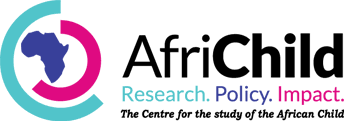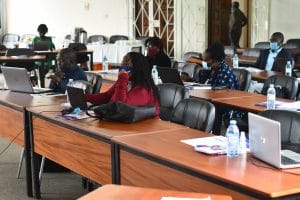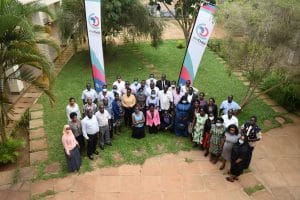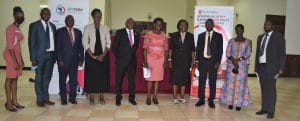A team of researchers from AfriChild concluded quantitative data collection in the ongoing Evaluation Fund supported impact study to examine whether a ChildFund project to empower communities to end violence against children in northern Uganda had a lasting effect and is sustainable after the project closed.
The research team collected data in Kitgum and Pader districts. In Kitgum, the research team interviewed 370 children and 243 caregivers. In Pader, the team interviewed 368 caregivers and 249 children.
Between 2017 and 2020, ChildFund International implemented the ‘Empowering Communities to Protect Children (ECPC)’ project in Kitgum district. The aim was to protect children against VAC.
In this project, ChildFund International undertook specific interventions such as training child protection stakeholders, empowering children as change agents in the communities and schools, and effecting legislation to prevent and respond to violence against children.
The goal of the three-year “empowering communities to protect children” intervention was to promote violence-free communities by addressing the protection needs of 3,000 children in 2 sub-counties, Matidi and Lagoro, in Kitgum District, Northern Uganda.
The project utilized a community-based approach to preventing violence against children, promoting increased investment in the child protection sector and access to improved child protection services.
Following the closure of the project, AfriChild is assessing the different aspects of this childhood violence prevention program.
The data will inform the AfriChild research team on the prevailing conditions about violence against children in northern Uganda.
The study findings from the ChildFund project will also inform policymakers and program actors on effective and sustainable strategies for addressing VAC in communities that have experienced armed conflict.
The second phase of data collection examined the existing situation in terms of impact and sustainability of the ‘Empowering Communities to Protect Children (ECPC)’ project model that ChildFund International implemented in Kitgum District between 2017 and 2020 on prevention of VAC.
This Second Phase followed the initial one that the team had in October 2020 as a baseline for the assessment.
Timothy Opobo, executive director AfriChild says this one-and-a-half-year project in partnership with ChildFund International Uganda is progressing smoothly with AfriChild continuously demonstrating the strengthened capacity to implement complex child-focused research studies such as this quasi-experimental evaluation of a community-based child protection intervention.
“Two phases of data collection for this study have been conducted in Kitgum and Pader Districts. A follow-up qualitative phase is pending Covid-19 restrictions adjustment. An elaborate research uptake strategy was developed through additional training from the funder (The Evaluation Fund for Prevention of Violence against Children),” Opobo adds.
To support research uptake, a reference group comprising of officials from the Ministry of Gender, Education, and Health, Uganda Police Forces, Uganda Bureau of Statistics, Child Fund International, National Children’s Authority, and the National Child Protection Working Group was constituted and held meetings to participate in the research process.
Research Questions
Does training Child Protection stakeholders result into functional community-based Child Protection systems for prevention of violence against children?
Does equipping child protection structures with knowledge, skills, financial and material resources on case management improve access to child protection services?
Does legislation and dissemination of relevant child protection laws lead to improved implementation and enforcement for prevention of violence against children?
Does equipping children with knowledge and skills in child protection, make them indispensable change agents for addressing violence against children?
What evidence exists to show that the project interventions to prevent violence against children at family and community level in post-conflict setting will be sustainable?
What are the critical enablers of project success, and what should be avoided for future similar interventions in and out of post-conflict settings?






